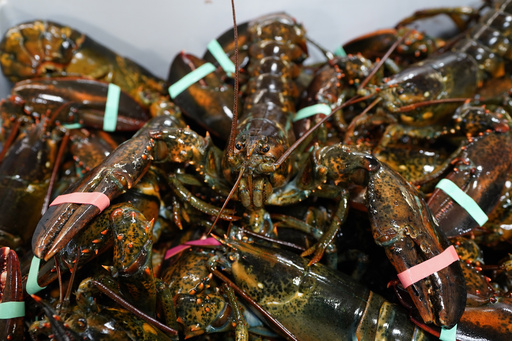
PORTLAND, Maine – Regulatory authorities are postponing plans for more stringent fishing regulations due to worries regarding a notable drop in juvenile lobsters amid the rising temperatures in New England’s waters.
The proposed regulation would require fishermen to adhere to a slightly larger minimum size for the lobsters they capture. The adjustment is minimal—just 1/16th of an inch or 1.6 millimeters. However, officials assert that this modification is crucial for the conservation of this economically important species, as many of the smaller lobsters would need to be released back into the sea.
Fishermen have expressed concerns that such a change is superfluous and could disrupt one of the nation’s most profitable seafood sectors, already facing challenges from increasing water temperatures, soaring costs, and new regulations aimed at safeguarding whales. Many in the fishing community have proposed either delaying or completely scrapping the planned regulations.
The Atlantic States Marine Fisheries Commission has indicated that a change in the minimum size is necessary due to a recent report showing over a 35% reduction in young lobster populations within the Gulf of Maine, a vital fishing region. Despite this, the Commission voted on Monday to delay the new rule’s rollout from its original date of January 1 to July 1, 2025.
Fishermen from Maine, who account for the majority of lobster catches in the United States, continue to oppose the increase in size requirements. Kevin Kelley, representing the Maine Lobstermen’s Association, emphasized that the delay could prevent U.S. fishermen from falling behind their Canadian counterparts, who also operate significant lobster fishing enterprises.
“We remain optimistic that this delay will allow us more time to consider the unintended consequences of the size increase, particularly since Canadian fishermen will still be able to catch smaller lobsters unless they also amend their size regulations,” said Kelley.
The size adjustment specifically concerns the Gulf of Maine, where officials have noted a staggering 39% decline in the lobster stock when comparing data from 2020-2022 with that of 2016-2018. Scientists have pointed to the warming conditions in the Gulf as a possible factor negatively affecting lobster populations.
The news about the decline in juvenile lobsters took many in the fishing community by surprise, leading to skepticism regarding the reliability of the data. Representative Jared Golden, a Democrat representing coastal Maine, has campaigned against the enforcement of the new rules, labeling the data as “outdated.”
Interestingly, these concerns about dwindling juvenile lobsters come at a time when the lobster industry is experiencing relative financial success. The value of lobster in the United States can vary significantly year by year, reaching a record of over $900 million for the first time in 2021 and remaining above $450 million last year—a still impressive figure historically.
The decision to delay the implementation of the size regulations aims to protect lobster populations while addressing market-related concerns raised by industry stakeholders. Patrick Keliher, chair of the Atlantic States Lobster Board and commissioner of the Maine Department of Marine Resources, remarked, “I hope that the combined benefits of the size change with the influx of young lobsters we’re observing in the settlement survey lead to a robust and sustainable resource for future generations.”
